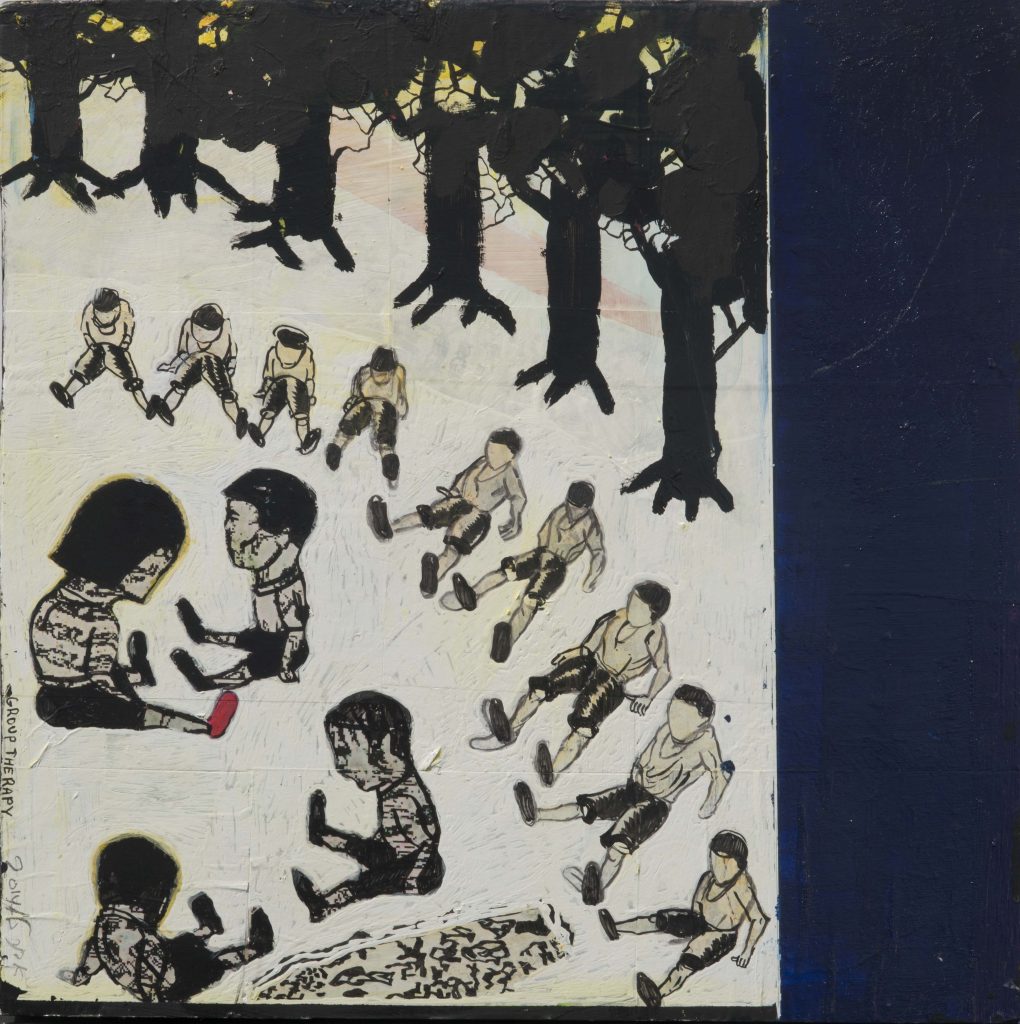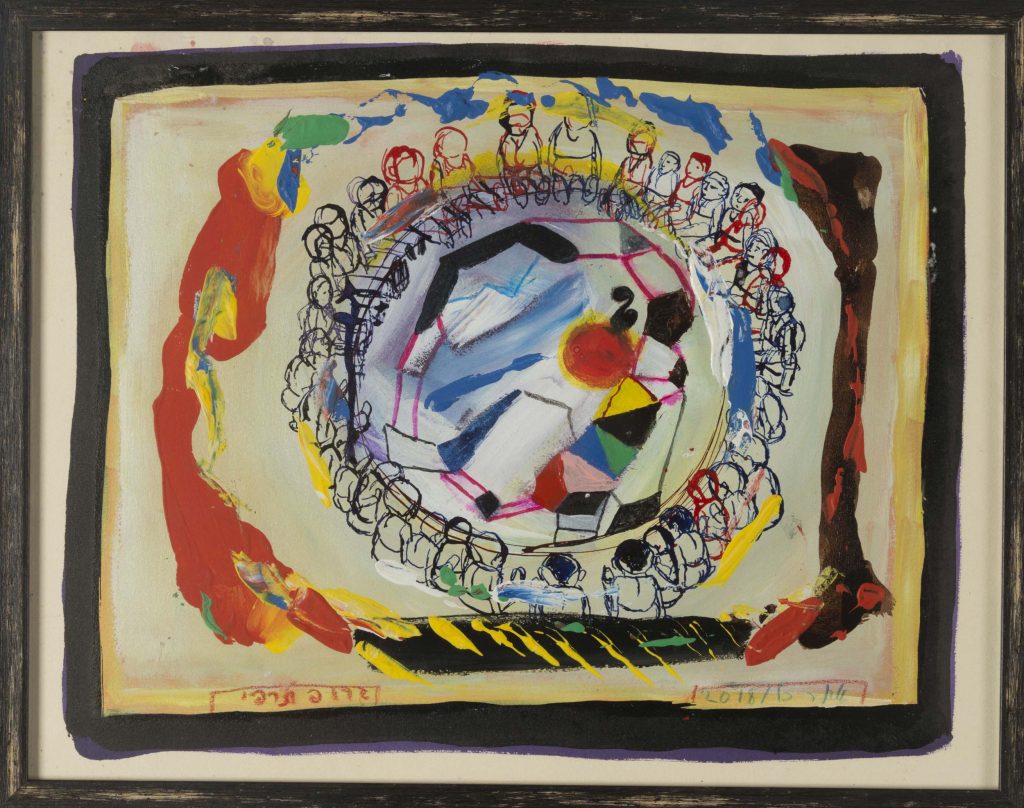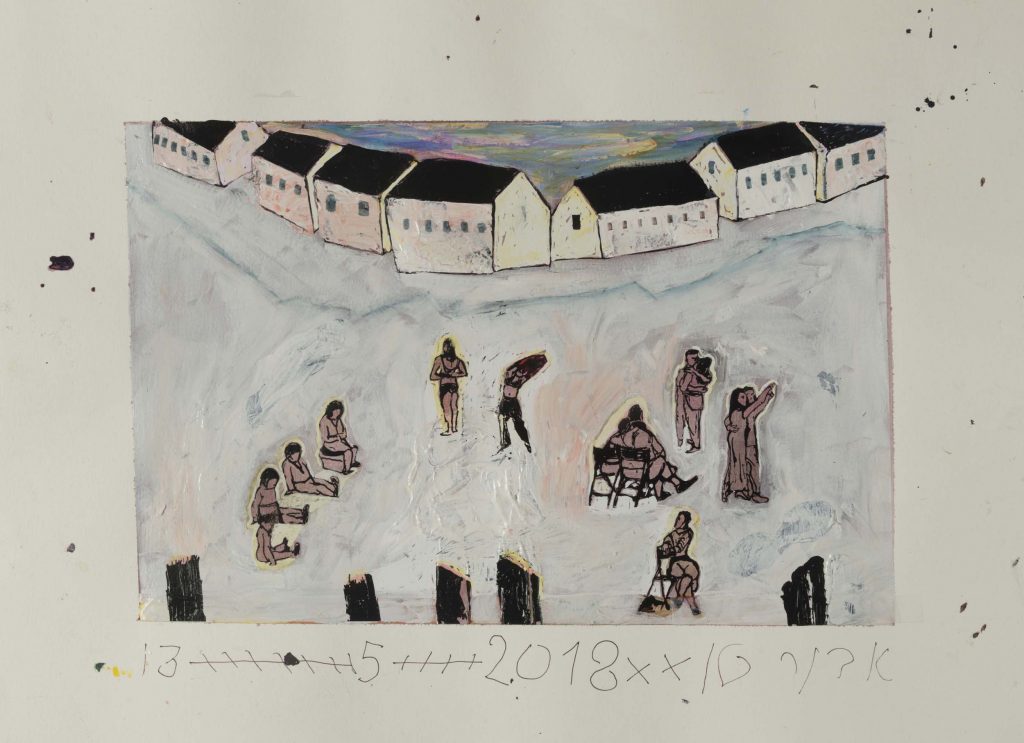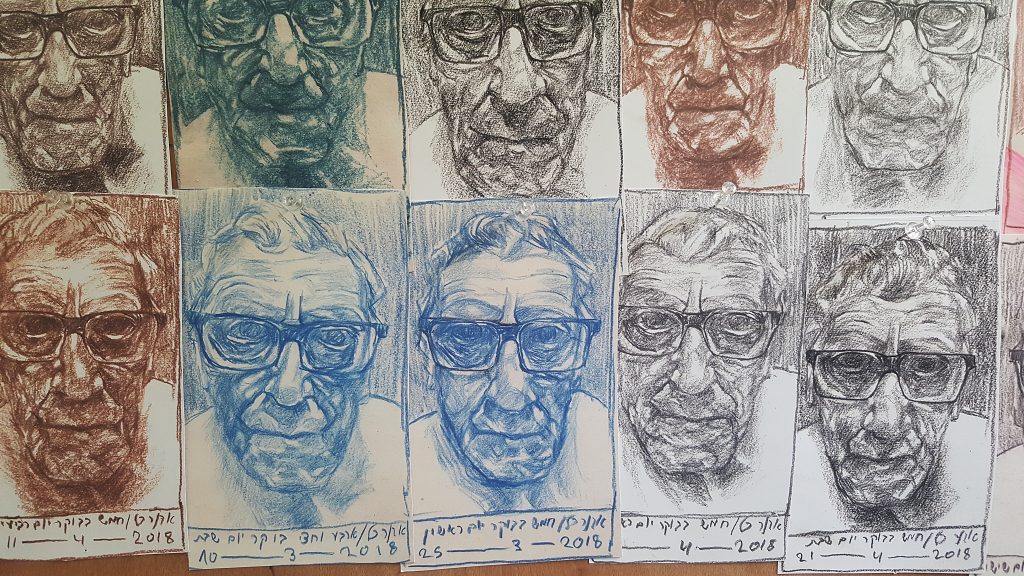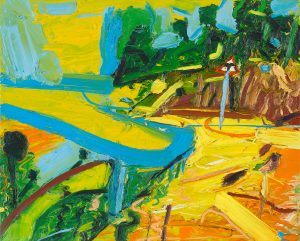Painter Avner Katz was born in Kibbutz Ramat Rachel and lived there until he turned 21, and this is evident in his works. Throughout his works, he draws and paints with a light and confident hand, figures, and detached scenes, taken from the kibbutz’s yard, from the kibbutz and Israeli atmosphere. His works are replete with masses of human figures. They are uniform in appearance, marching about, running, exercising, dancing in a circle, waving flags, raising uniform houses, dipping in the pool, looking in one direction. For their repetitive, mundane, and pathos-saturated movements, the multiple figures are ridiculed for their uniformity. There is an abysmal seriousness in the simple actions of waving the flag, running, sitting by the pool, removing a shoe, and taking off a shirt, to the point of jocularity and irony. Katz uses humor and irony, which serve to disguise sadness and despair, the constant longing for a lost reality of life. He deals with a sinking society, a crude and cruel mass culture, and panic about it.
In the exhibition at the Beeri gallery, Katz presents new works on paper alongside works on a wooden substrate. In the wooden works, he cuts and notches using carving tools. He clears out the backgrounds of the figures, like a sculptor carving in marble and extracting his characters from the stone. It is strenuous physical work that overburdens the flowing line. The lines are angular and sharp, and the knife traces remain in the background, filling the space with stripes and spots surrounding the figures. In the new series of paper drawings (2018), which are moving and virtuosi, the black background changes to white, which functions like the black; thick and heavy, cloudy, and “dirty.” The figures are painted with thin nib lines, like illustrations, which contrast with the rough stains of the houses and bright color spots floating next to them. The paper works are lighter, brighter, and more colorful. Yet, the figures, homes, and objects are painted in the same schematic drawing line, creating textures reminiscent of the woodcuts. Alongside the figures’ illustrative thin line, there are also drawings in coarse, thick, smeared, cloudy, and stained brush strokes. These are reminiscent of children’s hand paints and elements that recur in all paintings. Like floating detached trees, single-story houses arranged in a row or circle, fences, tiled floors, dogs, and donkeys. The human activity in almost all the paintings is obscure and seemingly trivial, the action of individuals and groups. The characters are anonymous, running, watching, working, exercising, sitting on chairs in a circle, or bowing their heads as they would at memorial ceremonies and funerals. The sense of the closed group, the human herd, is infused in the paintings and has a hopeless sorrow alongside existential irony. Sometimes, the figures are scattered on the page like in a strange dance. They hover in the bleached background between the other elements. They are detached and lack a grip on the ground as if they are not real, but just a constant output of memory segments, situations, and scenes from the artist’s feverish mind.
In the niche located at the gallery’s center hangs a dense cluster of self-portrait drawings made with the artist’s pencils. Every morning he awakes naturally and uses the time to practice drawing, painting from observing the only person awake at home, himself. The small drawings in colored pencils, in black, blue, and brown, are very similar but are not identical. The light changes, the gaze, The darkness. Under each drawing, the date and time are documented, which makes this collection a kind of personal diary. It is an entirely different kind of drawing from the linear, almost schematic figures. It is gripping in its in-depth, penetrating, investigative observation of the artist’s psyche. Here, Avner Katz’s ability to paint from observation is revealed directly, without the screens of humor and irony that characterize his work.

